Brown Pelican
Order: Pelecaniformes
Family: Pelecanidae
Genus: Pelecanus
Species: occidentalis
Description
-
Length: 51"
-
Wing span: 79"
-
Weight: 8.2 lb (3,740 grams)
-
Large dark waterbird with a long bill, a leathery pouch and webbed feet which, includes the hind toe
-
Large heavy body with a short tail and long broad wings
-
Soars close to the water surface
-
Breeding adults have broghter colors and their leathery puch turns bright red. **First photo is a breeding adult
-
Sexes look alike but males are slightly larger
-
Juvenile is overall dark brown with a white belly. In flight underside of wing has a pale horizontal stripe. **Last 2 photos are a Juvenile
Factoids:
- Unique among the world's seven species of pelicans, the Brown Pelican is found along the ocean shores and not on inland lakes. It is the only dark pelican, and also the only one that plunges from the air into the water to catch its food
- While the Brown Pelican is draining the water from its bill after a dive, gulls often try to steal the fish right out of its pouch. They sometimes even perch on the pelican's head or back and reach in. The pelican itself, however, is not above stealing fish from other seabirds. It also follows fishing boats and hangs around piers for handouts
- The Brown Pelican frequently lowers its head onto its shoulders with the bill open, pulls its head back, and stretches the pouch over its throat and neck. The exposed neck looks like a large lump sticking up out of the pouch
- Unlike most birds, which warm their eggs with the skin of their breasts, pelicans incubate their eggs with their feet. They hold the eggs under the webs that stretch from the front toes to the hind toe, essentially standing on the eggs to warm them. This peculiar incubation method made them vulnerable to the effects of the pesticide DDT. The DDT made the eggshells thin, and the incubating parents frequently cracked their eggs
- The Peruvian race of the Brown Pelican, found along the Pacific Coast of South America from southern Ecuador to Chile, is sometimes considered a separate species. It is larger than the other races, has fine white streaking on the feathers of the underparts, and has a blue pouch in the breeding season. Otherwise, it looks and acts like a Brown Pelican, found in similar coastal environments and plunge-diving for food
All photographs and audio clips are ©Jamie Mullin 2006
Sources: Cornell Lab of Ornithology & The Sibley Guide to Birds.
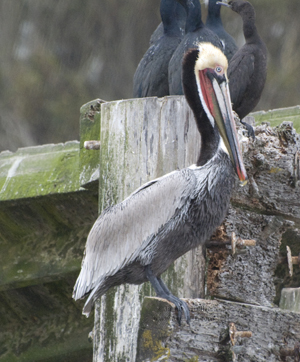 |
|---|
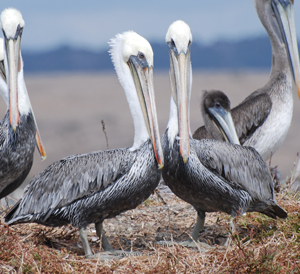 |
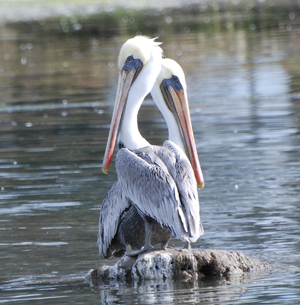 |
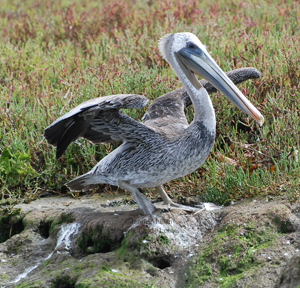 |
 |
 |
 |
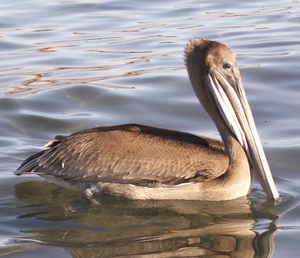 |
 |